Iwashi is another fish commonly seen at sushi restaurants nowadays. It is however, not a traditional Edomae-style fish as it was impossible back then to keep sardines fresh enough to be transported into Tokyo. Back then (and even now), the stomachs of the sardines would disintegrate extremely quickly, making the stomachs “melt”, as to break apart even if just handled using your fingers. With refrigeration and ice, serving sardines as sushi increased in popularity, but it was still served marinated in vinegar to hide the freshness.
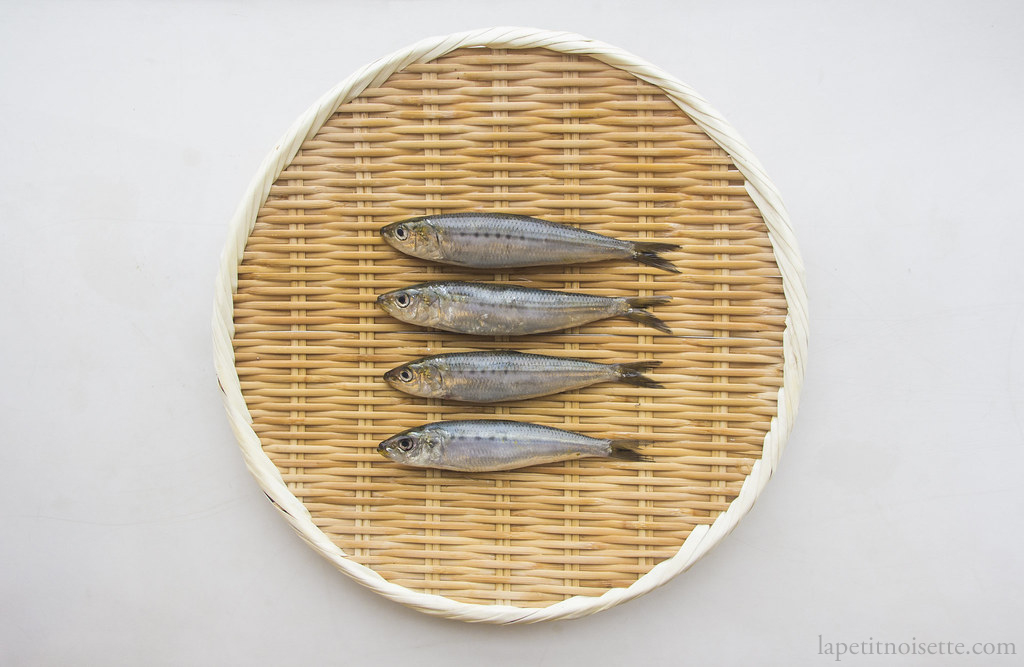
Classified as a silver skinned fish (Hikarimono/光り物), it is traditionally salted and marinated in vinegar. With today’s transport system, fresh sardines can be served as nigiri, with high-end sushi restaurants sometimes not marinating it in vinegar, and instead choosing to showcase it’s taste raw, using grated ginger instead of wasabi sandwich in-between the rice and sardine.
As they are very fragile, the entire filleting process is done by hand.
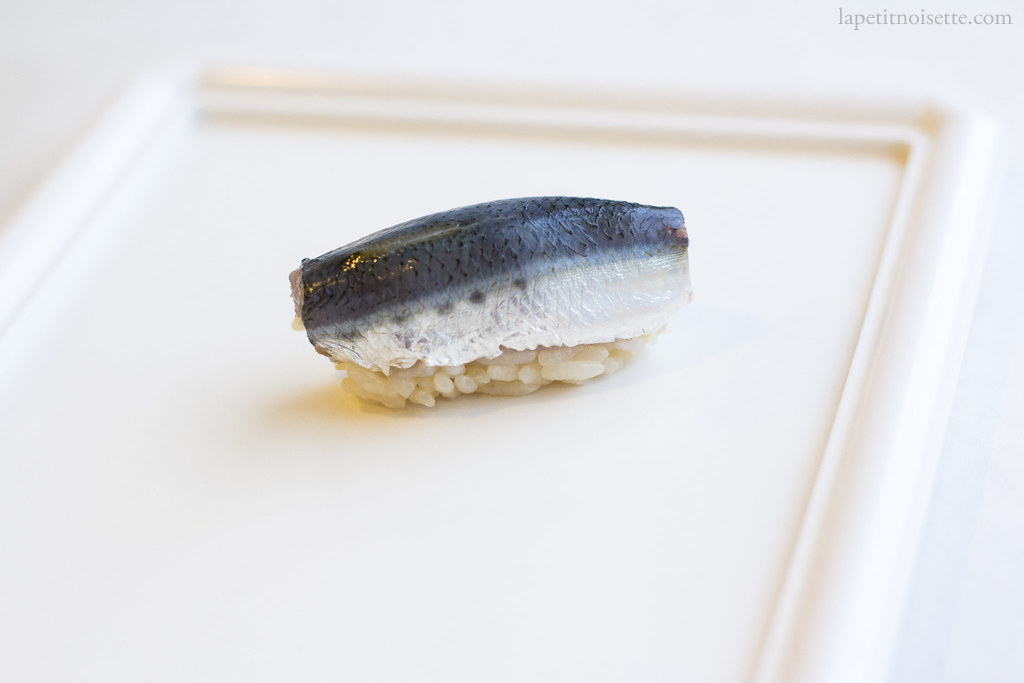
In season from late summer to autumn, they start to grow larger and larger later into the season, up to the point where they are usually grilled instead. Whilst available throughout the year, they become extremely fat just when the rainy season stops, at this point, they are perfect for nigiri, with the correct balance of flesh and fat. Any later and the sardines would have too much fat and flesh. When preparing sardines, we remove the heads and innards as soon as it arrives at the restaurant, if not it will quickly go bad. This is very different from Kohada which we sometimes keep for 2 to 3 days in ice water with the guts intact.
Edomae-style preparation of Sardines:
In between filleting sardines, please keep them in ice water as they go bad extremely fast. The sardines used here are one sardine per nigiri.
Start by rinsing the sardines in cold water.
Cut the heads off the sardines just behind the pectoral fin with a knife.
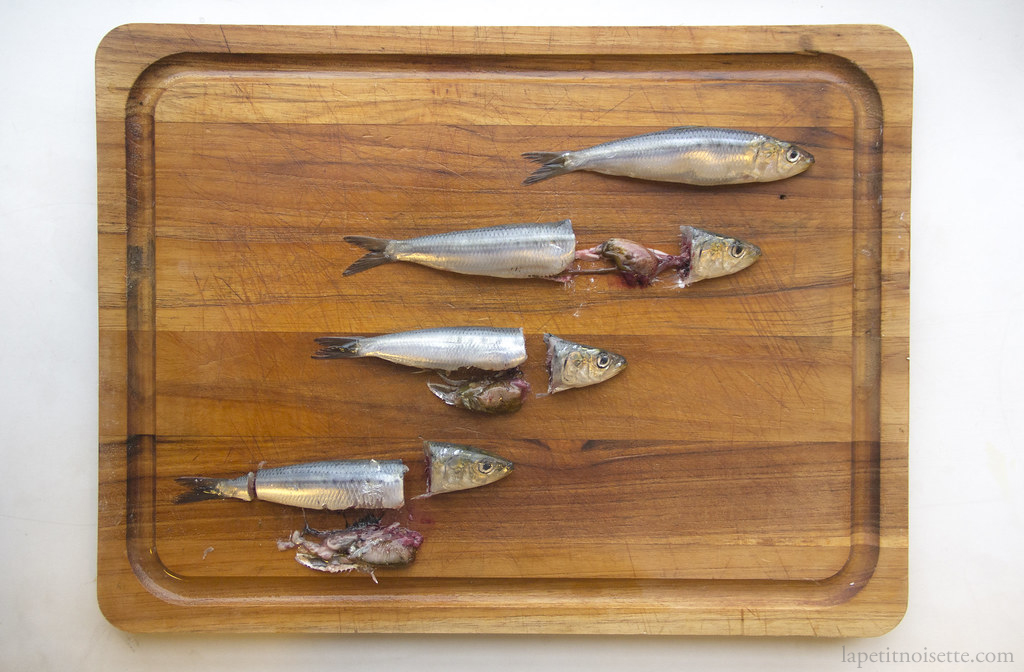
Cut open the stomach of the sardine with a knife and remove the guts.
Cut off the tail with a knife.
From here onwards, use your hands. Rinse the bodies of the sardines in cold water and remove any dirt and blood. Pat dry with paper towels.
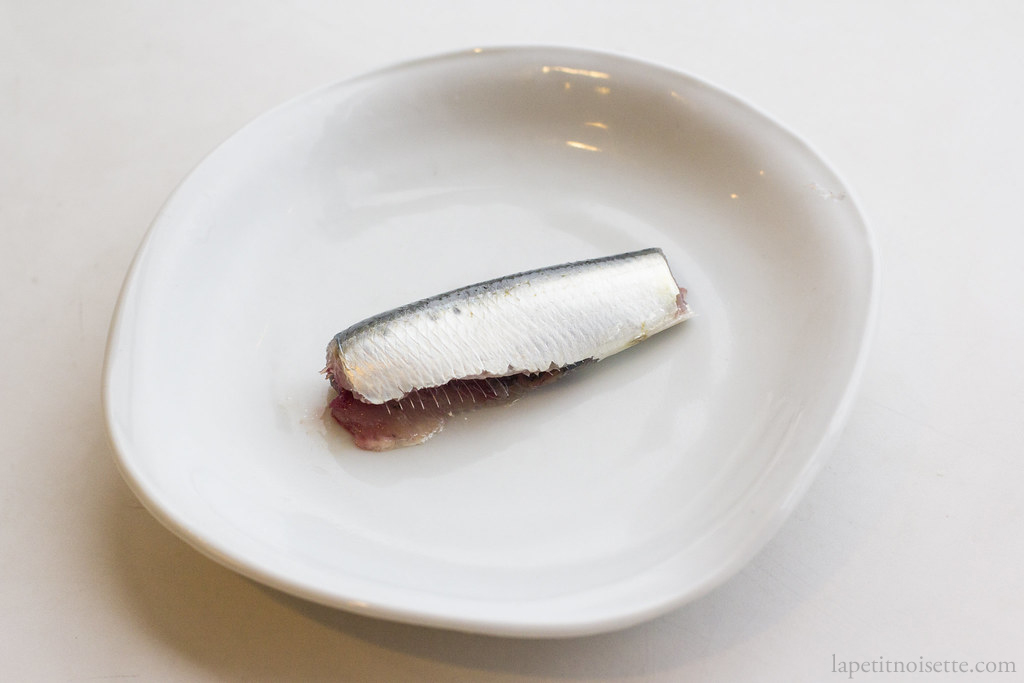
Slide you thumb just under the fillet and slowly separate the flesh from the spine.
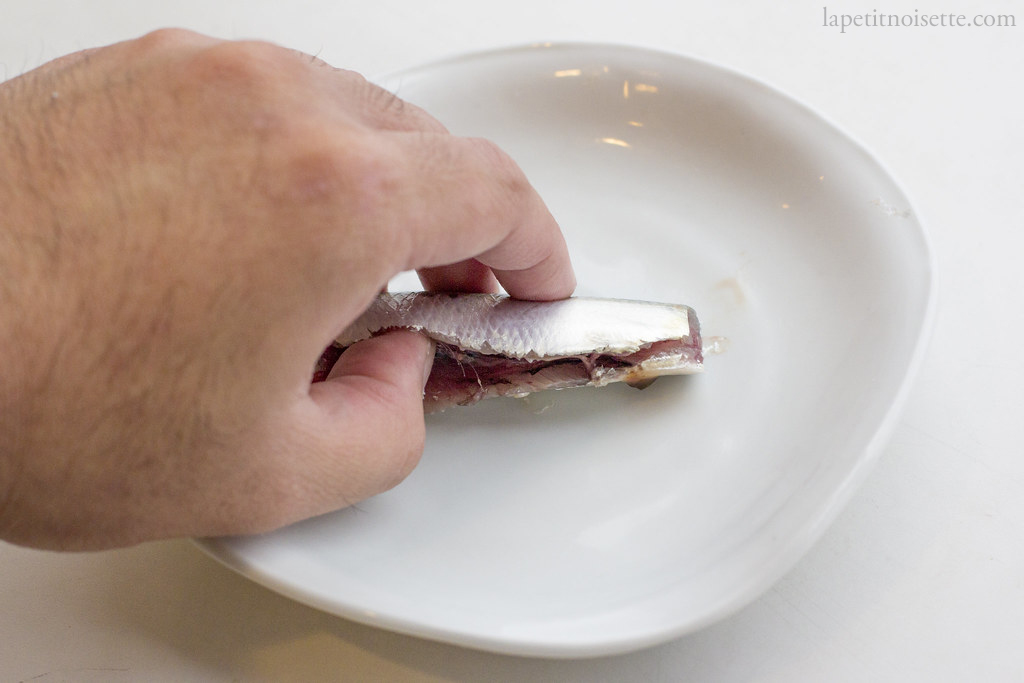
Keep going until the fish opens up like a book.
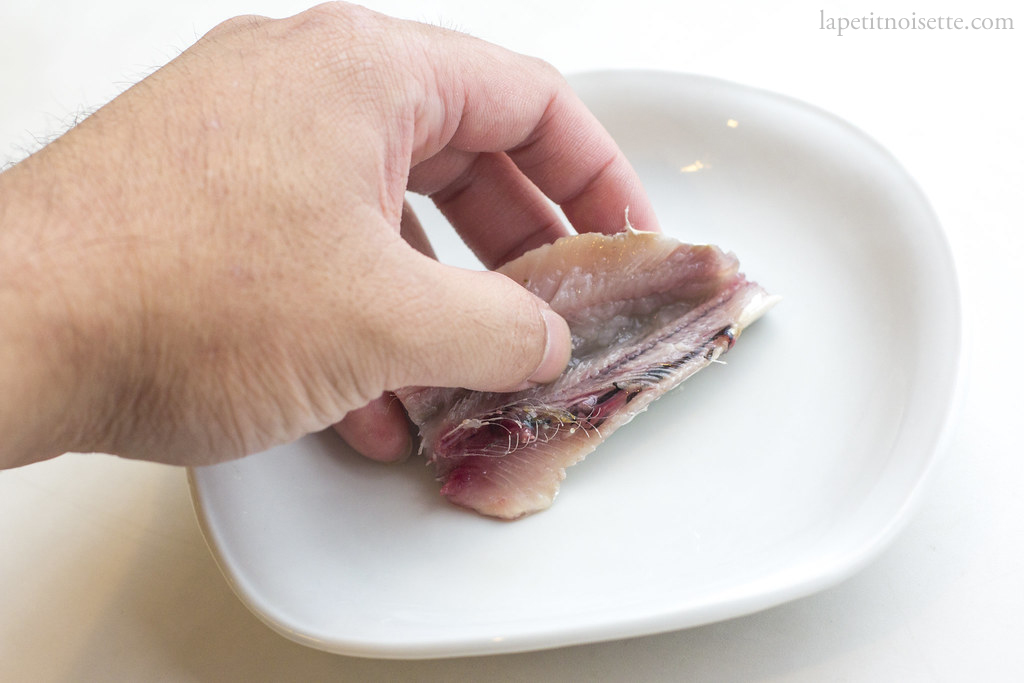
Gently insert your thumb under the fillet to remove the spine completely. Be careful not to tear the flesh.
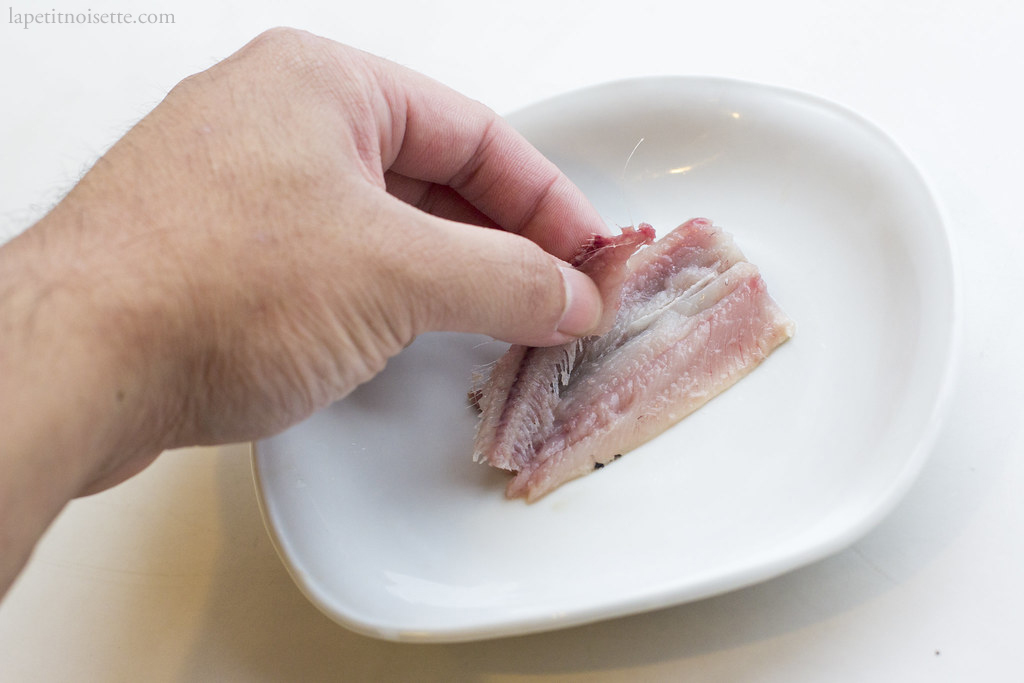
If using larger sardines, slice off the rib bones gently with a very sharp knife.
Salt a colander well and place the fillets on the colander. Salt the fillets and allow to marinade before washing off after 20 to 25 minutes, 25 minutes for large sardines.
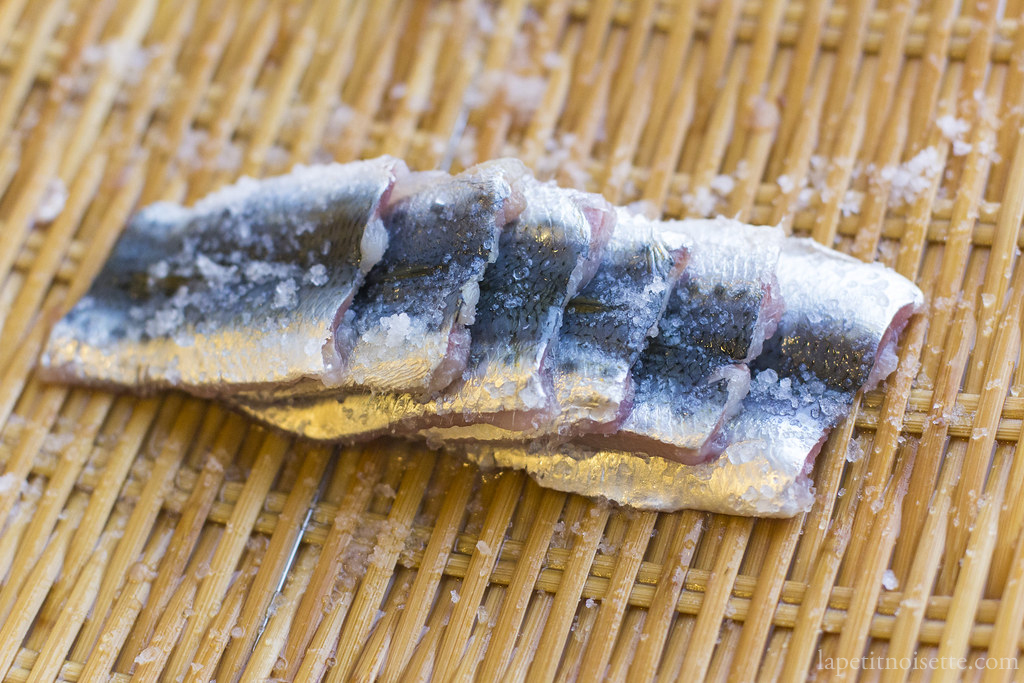
after all these there are still bones in the iwashi isn’t it
Yes after all the steps, the remaining bones should be soft enough to be eaten.
Aren’t they frozen to kill any risk of parasites ? Or are they usually pretty safe from your perspective? I tend to freeze mine just being cautious but don’t know if it is always necessary…
Unless you have a special freezer, you can’t kill fish parasites using a freezer. If you want to learn more, we recommend reading our article on how to choose sashimi here:
https://thejapanesefoodlab.com/sashimi/
I have read many times that with an average household freezer (-20c), 7 days would do the job. (Which you seem to also recommend in your article?).
I tend to do that and (touch wood) never had any issues so far.
Still curious to have your view on the sardines. Do you usually eat them fresh or frozen first?
Cheers
Yes you’re right that the average -20c household freezer would work but if you measure it carefully, it takes a couple of hours for the fillets to reach that temperature, during which ice crystals can start to grow within the flesh of the fish, resulting is a slightly mushier than desired texture. Even when testing multiple household freezers, it tended to be food right at the back of the freezer that reached -20c. If the freezer was very full or the food was close to the front, we found that it sometimes didn’t reach -20c. So whilst still possible we tend to recommend against using household freezing unless you’re willing to put up with the risk and reduction in quality.
In Japan, we always eat them fresh. Outside of that, we err on the side of caution and don’t eat any oily fish such as mackerel and sardines raw. Especially sardines, where their small sizes makes them exceptionally hard to keep fresh.
Hope that helps.
Always helpful, thank you again for your insights and experience!
You mentioned that traditionally, these are salted and then marinated in vinegar. Is this something that is still done, and if so, is there an ideal blend to marinate the fish in?